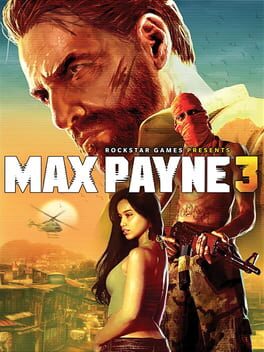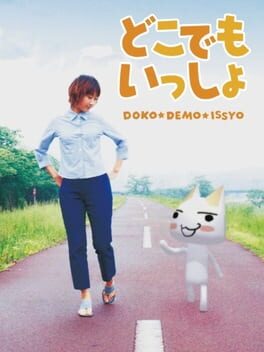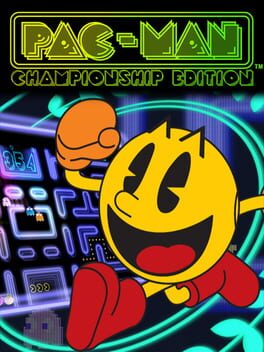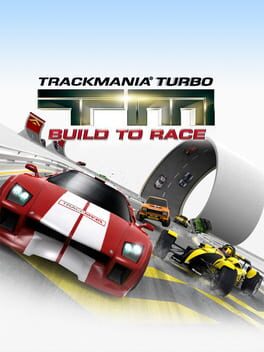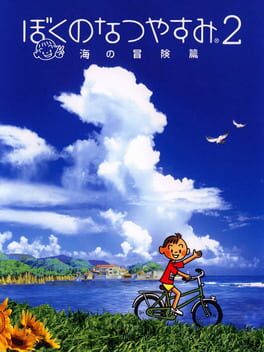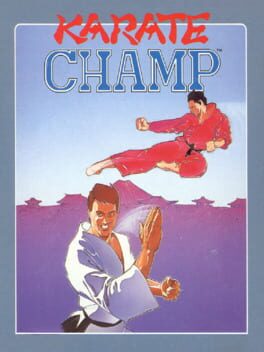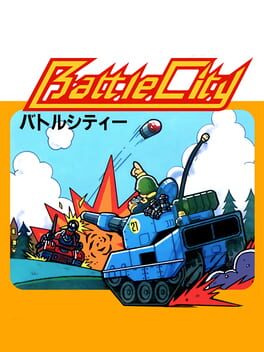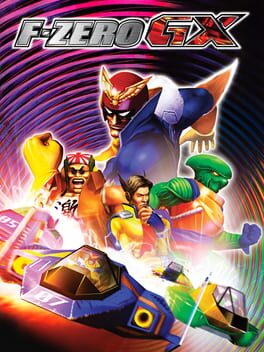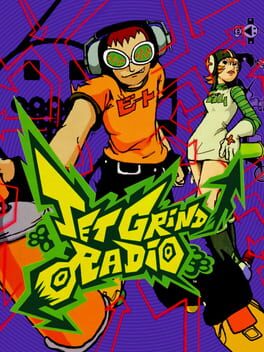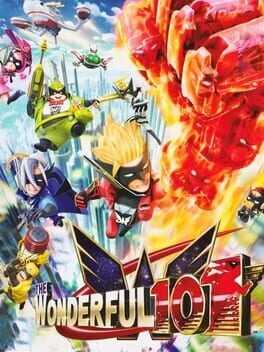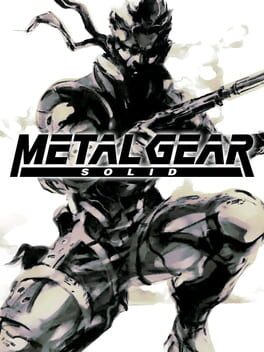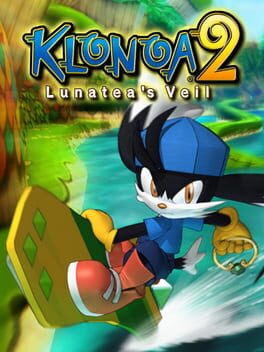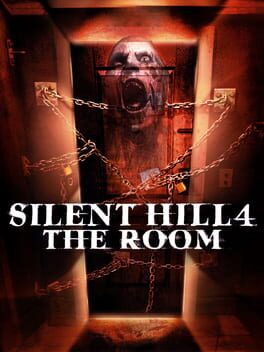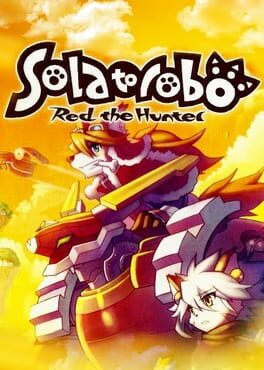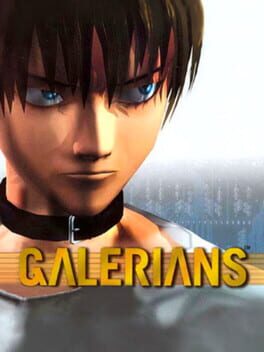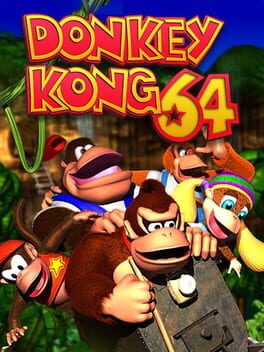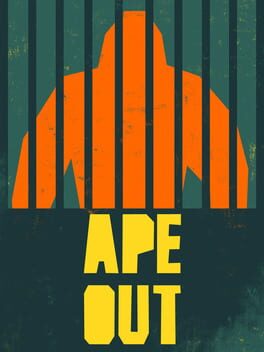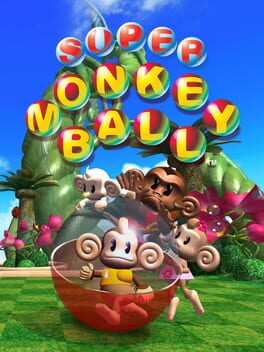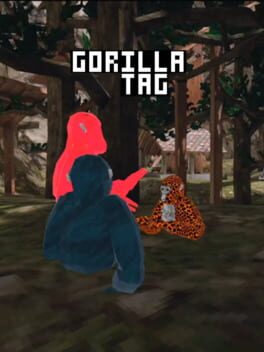68 reviews liked by Philia
My House
2023
it seems like every other day i find a new indie game or analog horror video in my youtube feed using hackneyed "subversions of expectation" or file manipulation or arg elements for spooks. imscared was cool, but imscared came out 12 years ago. so when i heard about myhouse.wad, i brushed it off. it wasn't until last night that i bit the bullet, and let me tell you: i should have done it sooner.
the house of leaves inspiration is blatant enough as to call it an adaptation. there's no point in dissecting it, but i'd like to use it to explain why my house doesn't suffer from the pitfalls you might expect. remember how house of leaves has a bunch of hidden shit inside of it that redditors have been talking to death for years? well, you don't need it to enjoy the book. it's an addendum for people who wanna go crazy over that kind of stuff. my house is the same way with its metahorror. the creepypasta elements are contained in the downloadable journal rather than the game itself. the "deeply emotional" (read: tactless and generic internet psychological horror) themes fans don't shut up about are contained in secret content that you won't find unless you're looking for it. in that case, why should you play the wad?
cuz it's a damn good time! if you liked lost in vivo's combat-heavy take on otherworld from silent hill, you'll like my house. the maps are super pretty and fun to explore. there are cool new enemies too! if nothing else, play it to see a modern action horror doom map with strong atmosphere. it only took me 30 minutes and i'd recommend it even if you already know the "twists".
as much as i still want to mock the fandom and compare it to brutal doom, i do hope this inspires people to take full advantage of gzdoom's special features. maybe someone will make a map that uses similar technical tricks to make something in a genre other than horror. as it stands, i super enjoyed my time in my house and i recommend it to all the skeptics. this one's different.
SOLD
Max Payne 3
2012
Unexpectedly really liked this one. Max Payne 3 is pretty different from its predecessors, both in tone and gameplay, but this isn’t necessarily a bad thing. MP3 manages to shake up the series in quite a few ways while mostly still retaining the gritty tone and flashy, fast-paced gunplay that the series is known for.
First thing for series veterans to know is that MP3 is a full-on cover shooter, and levels are generally designed around this. Enemy encounters mostly take place at long range with both parties cautiously popping out from cover to take shots at each other. Because of this, most encounters require a relatively slow pace of play with the use of bullet time to line up long range shots and the ocasional use of shoot dodging when switching between cover. There are certain moments (I would say about 20 percent of encounters) that take place at close range and allow the player to easily adopt a more chaotic style of fighting akin to how most people play the first two Max Payne games. In these encounters you can do the Max Payne classic of storming through a door unprepared and trying to survive by strafing wildly and diving over enemies as you pick them off in slow motion. These are, imo, the most fun moments of the game, and I wished there were more of them. That said, the cover shooting segments are still rather fun and can be very chaotic and reactive in certain situations.
One improvement in presentation and gameplay, which is very much in line with the goals of the first two games, is the improved rendering of bullets and bullet wounds. One of the selling points of Max Payne 1 was the fact that every bullet in the game (apart from the sniper rifle) was a fully rendered object that had to leave your gun and travel through the air before hitting an enemy. You could pretty easily see this during bullet time or shoot dodging. Shoot dodging away from an enemy and being able to actually see a cluster of buckshot whiz past your previous location is still awesome and exhilarating even 20+ years later. MP3 does its best to recreate and improve upon this effect and definitely succeeds. I’m unsure exactly how bullets are rendered in this game or if MP3 utilizes the same technique as MP1 but the resulting experience for the player is largely the same. MP3 further ups the ante on this by rendering the actual location of bullet wounds on enemies in great detail. When you’re shoot dodging or getting a kill cam you’re able to see exactly where and how each bullet is entering an enemy. This gives gunplay a hugely visceral edge to it making each of your shots feel weighty and powerful. Placing a kill cam (the most violent gameplay visual in Max Payne by far) at the end of each encounter also produces a possibly unintentional but really interesting effect for the player. A lot of the encounters in this game are pretty difficult and can really get your blood pumping even on normal difficulty. Because of this seeing the game enter a kill cam can be a very cathartic moment of relief - you’ve finally done it, you’ve killed the bastards, and now you have at least a short moment to rest and collect yourself. Max Payne 3 gives you the option to keep shooting these already dead enemies during kill cams and will show each new bullet entering their still standing corpse as you do it. With all the residual adrenaline and relief present in some of these moments I actually found myself continuing to shoot these enemies not out of a desire to see the effect but out of a heightened sense of emotion - part anger, part adrenaline, and part inability to get myself out of simulated fight or flight mode. It was a really interesting and disquieting experience that I’ve never had playing a video game, and I would honestly recommend playing MP3 just to check it out.
One of the most immediately obvious things about Max Payne 3 is that it doesn’t take place in the bleak, isolating, and snow covered streets of Max’s hometown of New York City. Instead Max Payne 3 chooses the neon lit and sun soaked nightclubs and favelas of Sao Paolo as it’s setting - literally the opposite MP1 and 2’s in many ways. A lot of fans didn’t like this change, but I think it works. Setting a third game in New York would have felt a bit too safe for my liking. The setting of Sao Paolo and it’s outskirts also allows MP3 to have the greatest variety of mission locations in the whole series. Almost single mission feels totally different from an environmental standpoint, which helps to keep the game fresh. Sao Paolo is definitely not quite as noir-ish as NYC, but this makes sense given MP3s slight shift away from the noir cliches that defined MP1 and to a lesser extent MP2.
MP3 doesn’t carry over all the noir conventions of the previous games but does adopt enough of them that it ends up as a sort of uniquely sun-soaked and action oriented take on the genre. A lot of the noir conventions of the previous games - some of which have probably just become Max Payne conventions for a lot of people - like Max’s narration, the presence of corruption, crime and conspiracy just below the surface of Max’s world, and a sense of fatalism are still here and work well. The game, however, does sometimes lean heavily into action movie tropes like big car chase set pieces, which leaves it feeling less noirish than the previous two games.
Max’s characterization in this game is also brilliant and one of the few instances of the middle aged self destructive anti-hero that I really enjoy. This is an honestly brutal depiction of substance abuse and depression - with Max drinking enough and taking enough pills that his doctor - were he the kind of guy who’d bother to go see a doctor - would probably tell him he’d be dead in five years if he didn’t stop. Max also at various points strongly implies that he’s half hoping to die in a shootout. Both of these things tie into gameplay in interesting ways. Max’s substance abuse of course relates to gameplay with pills being health items and his death wish nicely ties into the incredibly reckless combat style the player can adopt. There are a lot games out there that address depression and substance abuse through metaphor and abstract imagery - trying to give the player a sense of how these things feel to go through; This is not one of those games. Max Payne 3 is unapologetically blunt in the way it addresses these topics, and I think it works for the most part. Seeing this really ugly portrayal of a severe depression and substance abuse problem - of an intensely self loathing and guilt stricken character at deaths door in more ways than one because of it feels very refreshing. Max knows that he’s sick and that he’s hurting other people because of it, but for most of the game he doesn’t have the desire or wherewithal to try to help himself. One of the most emotionally compelling and resonant elements of Max’s story was how Max could see the negative impact his lifestyle had on other people, felt guilty about it, and then recklessly threw himself into doing anything he could to make up for it shy of actually getting sober (at least for most of the game). I think this is a dynamic that in broader and more grounded sense will probably be familiar to certain players and one I that I feel is underutilized in media in general. I do have some qualms with how the game portrays Max quitting drinking however. This is mostly due to how unrealistic it is, and think it would have been more effective had the player been forced to deal with his withdrawal symptoms (or if the game had at least shown something or this kind) or if he vowed to quit and then quickly relapsed, in part due to the stress of the situation he was going through. Regardless, this game does do a lot right IMO, and I certainly commend it for that.
This is a bit of a weird game to recommend because it’s so similar to MP 1 and 2 but so different from them in a lot of ways. For MP fans I think reactions to this game will be very split. I can, however, recommend this game to people who enjoy cinematic shooters and cinematic 3rd person cover shooters especially. This is probably the best one of those that I’ve ever played both in terms of gameplay and story. Rock solid satisfying gameplay and a surprisingly insightful and emotionally resonant story that knows exactly what it wants to be and doesn’t overreach or undo itself through pretension or muddled writing.
First thing for series veterans to know is that MP3 is a full-on cover shooter, and levels are generally designed around this. Enemy encounters mostly take place at long range with both parties cautiously popping out from cover to take shots at each other. Because of this, most encounters require a relatively slow pace of play with the use of bullet time to line up long range shots and the ocasional use of shoot dodging when switching between cover. There are certain moments (I would say about 20 percent of encounters) that take place at close range and allow the player to easily adopt a more chaotic style of fighting akin to how most people play the first two Max Payne games. In these encounters you can do the Max Payne classic of storming through a door unprepared and trying to survive by strafing wildly and diving over enemies as you pick them off in slow motion. These are, imo, the most fun moments of the game, and I wished there were more of them. That said, the cover shooting segments are still rather fun and can be very chaotic and reactive in certain situations.
One improvement in presentation and gameplay, which is very much in line with the goals of the first two games, is the improved rendering of bullets and bullet wounds. One of the selling points of Max Payne 1 was the fact that every bullet in the game (apart from the sniper rifle) was a fully rendered object that had to leave your gun and travel through the air before hitting an enemy. You could pretty easily see this during bullet time or shoot dodging. Shoot dodging away from an enemy and being able to actually see a cluster of buckshot whiz past your previous location is still awesome and exhilarating even 20+ years later. MP3 does its best to recreate and improve upon this effect and definitely succeeds. I’m unsure exactly how bullets are rendered in this game or if MP3 utilizes the same technique as MP1 but the resulting experience for the player is largely the same. MP3 further ups the ante on this by rendering the actual location of bullet wounds on enemies in great detail. When you’re shoot dodging or getting a kill cam you’re able to see exactly where and how each bullet is entering an enemy. This gives gunplay a hugely visceral edge to it making each of your shots feel weighty and powerful. Placing a kill cam (the most violent gameplay visual in Max Payne by far) at the end of each encounter also produces a possibly unintentional but really interesting effect for the player. A lot of the encounters in this game are pretty difficult and can really get your blood pumping even on normal difficulty. Because of this seeing the game enter a kill cam can be a very cathartic moment of relief - you’ve finally done it, you’ve killed the bastards, and now you have at least a short moment to rest and collect yourself. Max Payne 3 gives you the option to keep shooting these already dead enemies during kill cams and will show each new bullet entering their still standing corpse as you do it. With all the residual adrenaline and relief present in some of these moments I actually found myself continuing to shoot these enemies not out of a desire to see the effect but out of a heightened sense of emotion - part anger, part adrenaline, and part inability to get myself out of simulated fight or flight mode. It was a really interesting and disquieting experience that I’ve never had playing a video game, and I would honestly recommend playing MP3 just to check it out.
One of the most immediately obvious things about Max Payne 3 is that it doesn’t take place in the bleak, isolating, and snow covered streets of Max’s hometown of New York City. Instead Max Payne 3 chooses the neon lit and sun soaked nightclubs and favelas of Sao Paolo as it’s setting - literally the opposite MP1 and 2’s in many ways. A lot of fans didn’t like this change, but I think it works. Setting a third game in New York would have felt a bit too safe for my liking. The setting of Sao Paolo and it’s outskirts also allows MP3 to have the greatest variety of mission locations in the whole series. Almost single mission feels totally different from an environmental standpoint, which helps to keep the game fresh. Sao Paolo is definitely not quite as noir-ish as NYC, but this makes sense given MP3s slight shift away from the noir cliches that defined MP1 and to a lesser extent MP2.
MP3 doesn’t carry over all the noir conventions of the previous games but does adopt enough of them that it ends up as a sort of uniquely sun-soaked and action oriented take on the genre. A lot of the noir conventions of the previous games - some of which have probably just become Max Payne conventions for a lot of people - like Max’s narration, the presence of corruption, crime and conspiracy just below the surface of Max’s world, and a sense of fatalism are still here and work well. The game, however, does sometimes lean heavily into action movie tropes like big car chase set pieces, which leaves it feeling less noirish than the previous two games.
Max’s characterization in this game is also brilliant and one of the few instances of the middle aged self destructive anti-hero that I really enjoy. This is an honestly brutal depiction of substance abuse and depression - with Max drinking enough and taking enough pills that his doctor - were he the kind of guy who’d bother to go see a doctor - would probably tell him he’d be dead in five years if he didn’t stop. Max also at various points strongly implies that he’s half hoping to die in a shootout. Both of these things tie into gameplay in interesting ways. Max’s substance abuse of course relates to gameplay with pills being health items and his death wish nicely ties into the incredibly reckless combat style the player can adopt. There are a lot games out there that address depression and substance abuse through metaphor and abstract imagery - trying to give the player a sense of how these things feel to go through; This is not one of those games. Max Payne 3 is unapologetically blunt in the way it addresses these topics, and I think it works for the most part. Seeing this really ugly portrayal of a severe depression and substance abuse problem - of an intensely self loathing and guilt stricken character at deaths door in more ways than one because of it feels very refreshing. Max knows that he’s sick and that he’s hurting other people because of it, but for most of the game he doesn’t have the desire or wherewithal to try to help himself. One of the most emotionally compelling and resonant elements of Max’s story was how Max could see the negative impact his lifestyle had on other people, felt guilty about it, and then recklessly threw himself into doing anything he could to make up for it shy of actually getting sober (at least for most of the game). I think this is a dynamic that in broader and more grounded sense will probably be familiar to certain players and one I that I feel is underutilized in media in general. I do have some qualms with how the game portrays Max quitting drinking however. This is mostly due to how unrealistic it is, and think it would have been more effective had the player been forced to deal with his withdrawal symptoms (or if the game had at least shown something or this kind) or if he vowed to quit and then quickly relapsed, in part due to the stress of the situation he was going through. Regardless, this game does do a lot right IMO, and I certainly commend it for that.
This is a bit of a weird game to recommend because it’s so similar to MP 1 and 2 but so different from them in a lot of ways. For MP fans I think reactions to this game will be very split. I can, however, recommend this game to people who enjoy cinematic shooters and cinematic 3rd person cover shooters especially. This is probably the best one of those that I’ve ever played both in terms of gameplay and story. Rock solid satisfying gameplay and a surprisingly insightful and emotionally resonant story that knows exactly what it wants to be and doesn’t overreach or undo itself through pretension or muddled writing.
Doko Demo Issyo
1999
text by tim rogers
★★★★
“ACTUALLY A VIDEOGAME.”
I’ve honestly never liked Pac-Man. At all. Here I will take a page from all of the middle-aged mohawkers submitting guitar effects pedals reviews on Harmony Central, and say that I’ve been playing guitar for 35 years, have owned Strats, Teles, Les Pauls, and SGs, used Bigsby tremolos and Gibson Vibrolas, have covered everything from AC/DC to Rage Against the Machine, and I’ve never found a better fuzz pedal than the traditional Electro-Harmonix Big Muff, so trust me when I say that the Electro-Harmonix Little Big Muff is a pansy-ass piece of stuff.
Take all the guitar terms in the previous sentence, and replace them with the names of game consoles and software franchises.
Why don’t I like Pac-Man? In the past, when I had to stand on a milk carton, I played it in pizza joints because my dad figured I loved it; I played it on Atari 2600 because it existed, and eventually, I played Ms. Pac-Man on the Nintendo Entertainment System. I can’t say I hated Ms. Pac-Man — I just didn’t like it. It wasn’t enough. It didn’t have any balls, machismo, guts, or what have you. In later years — leading right up until Pac-Man CE was released for Xbox Live Arcade, in fact — I’d identify that I just didn’t like the way Pac-Man controlled. It felt too loose and weird, which just didn’t totally mesh with how tight the game was conceptually.
If you’d have asked me how to make a better Pac-Manning experience, I probably would have told you I’d think about it and then get back to you later. That night, when you weren’t watching, I would have cut you off of my LiveJournal friends list, and then set my own journal to “friends-only”.
It’s a hell of an IQ-test question: how do you make Pac-Man better? It’s like asking me to list, off the top of my head, as many verbs that start with “V” as possible (validate, verify, vindicate, et cetera). I couldn’t think of any possible solutions, probably because I’m not a genius game designer. Maybe I could be, I don’t know, though like my mother always told me, I guess I’m kind of lazy. Either way, it’s evokes ambiguously positive emotions that original Pac-Man creator Toru Iwatani was reportedly responsible for the virtuosic Pac-Man CE — it makes me feel good to know that it took him nearly 30 years to come up with all these ideas.
Was Namco ever trying, though, to make Pac-Man anything more than an icon? Judging by the quality of every game starring Pac-Man, it would seem that none of them were made for any more generous reason than to keep bumping his name to the top of the gamer subconscious, to keep telling people who play games that, hey, this company called Namco has an archetypically deep heritage, and they’re not afraid of it!
They’ve been plopping remakes and reissues of Pac-Man out on the lunchroom tray of humanity for the better part of this most recent decade. They never hesitate to flop the original game onto one of their six-game “Museum” volumes, you know, which generously use up about 1/3000th of their storage medium. As of this writing, in addition to Pac-Man CE, there are two other Pac-Mans on Xbox Live Arcade — the original, and Ms. Pac-Man, both with six-dollar price tags, ugly borders and awesome online ranking leaderboards, which can only be accessed if you unlock the full version of the game.
(Really, for heck’s sake, Microsoft, let’s stop using the word “unlock”. It’s not like we’re using keys to play these games — nor even, in the gaming sense, are we using points or in-game currency. Using the word “Unlock” makes it seem like we can purchase the games using the “Gamer Points” we get from unlocking “Achievements”. Just use the word “Purchase”, please. It’s bad enough that you’ve made your own currency with “Microsoft Points”, and it’s precisely because you’ve made your own currency with which to buy things that it’s ridiculous that you award another kind of “Points” to people who do &^#$#ed stuff in games, which in turn makes it more ridiculous that you use the same word (“Unlock”) to indicate the option to purchase an Xbox Live Arcade game as you use to indicate a player being awarded an “Achievement”.)
Anyway, yeah, who wants to pay 400 “Microsoft Points” to play the original Pac-Man, when you can just pick up Ridge Racer 6 from a bargain bin and play Pac-Man to your heart’s content on the loading screen? When (not if) you get bored, you can just play Ridge Racer 6, which has nitro in it, which is awesome. However, it doesn’t have slipstreaming in it, even though Ridge Racer 5 did, because they wanted to save slipstreaming for Ridge Racer 7, which is as marginal an upgrade as you’re ever to see in videogames, though once you’ve played 7, 6 — and its Pac-Man loading screen — should seem utterly and horribly broken. After years of not upgrading the number in the series title, Namco sprung Ridge Racer 6, a statement of their staunch support of the Xbox 360, only to announce Ridge Racer 7 for the PlayStation 3 literally months later.
There’s a point to be made of this slipstream-talk, however muddy it might be: this is the sort of bullstuff Namco does. More to the point: the Pac-Man loading screen of Ridge Racer 6 isn’t even a loading screen. It’s just there. From the second it pops up, it says at the bottom of the screen: “Press the A button to begin Ridge Racer 6.” Why do they even put Pac-Man there in the first place? One slightly morbid reason is that it’s a throwback to Ridge Racer on the PlayStation, which let you play Galaxian at the pre-game loading scene. Many Namco games since then have let you play a game at the loading screen, so maybe Ridge Racer 6 was slyly trying to stir up nostalgia in the kinds of people who give a stuff. I wonder what happened to the guy who suggested the idea of putting a game in the loading screen. He’s probably 65 years old right now, with teeth the color of wooden stuff, and just finished paying off the loan for his mid-size condominium in a boring neighborhood in Tokyo. I’ve probably walked past his home a hundred times and never realized it. Probably some younger guy came up with the idea, and passed it on to the older guy out of “respect” so that the older guy could get a promotion, after which he would remember the younger guy and promote him some day. The younger guy probably never smoked a single cigarette until he was twenty-four years old.
Pac-Man is not just for loading screens — no, he’s also all over scoreboards in the Ridge Racer series, as well. Every time you hit a checkpoint, he pops up on your time display, chasing ghosts. This retro-gamer appeal is sprinkled into Namco games quite viciously, aiming to be the sort of thing some surreal-Dig-Dug-painting-owning poser on a UK games forum hears about and then says “SOLD”, maybe with some exclamation marks.
Also, a little Pac-Man badge appeared on Klonoa’s hat. Klonoa was Namco’s would-be mascot, star of a bland 2.5D game released for the PlayStation; some people still think that game was Jesus, and it kind of sucks to be those people. Klonoa had potential, anyway, though Namco didn’t care, and immediately resumed exhuming Pac-Man’s iconic profile and propping his corpse up in the weirdest places.
At the same time, developers all over the place claimed to love the original Pac-Man and tightened-up Ms. Pac-Man. Shigeru Miyamoto said, in an interview, that without Pac-Man, there would have been no Donkey Kong, and I guess he’s probably right. Donkey Kong is, subtly, about as inspired by Pac-Man as a game can get without also playing a lot like Pac-Man. The one game publisher in the world to understand the core of Pac-Man the least, ironically, has been Namco: since the success of the two “canon” games in the series, Namco has used and abused the “character” on numerous numbing occasions, such as the dull platformer Pac-Land, which no one likes unless they realize first that no one else likes it, or Pac-Man World, a 3D take on Pac-Land, where Pac-Man is now a sphere instead of a circle, which makes the fact that he has legs all the more freakish, and the fact that he has a speaking voice actually quite terrifying, and the fact that the stages lack actual design unforgivable. Recently, there’s been Pac-Pix on the DS, a game less tangentially related to the original Pac-Man than Pac-Man World, though jarring all the same: you have to keep drawing pictures of Pac-Man, his mouth facing in the correct direction, so that he munches the perpetually spawning ghosts. Pac-Pix, while a tiny bit interesting, misses the core of Pac-Man — the game is no longer about the “hunted becomes the hunter” dynamic, it’s just about drawing pictures big enough and quickly enough.
Arguably the most inspired of all the Pac-Man rehashes was Pac-Man VS, designed by none other than Shigeru Miyamoto. This was back when Nintendo was pushing the feature to connect a Gameboy Advance to a Gamecube, and use the Gameboy Advance as a controller. This era also brought us the dismal Final Fantasy Crystal Chronicles (it’s as much a challenge to try to enjoy it alone as it is to find three people willing to play it at the same time) and the friendship-wrecking The Legend of Zelda: The Four Swords.
It might be most accurate to say that, back in those days, Nintendo was forcing all developers to include some level of GBA-Gamecube connectivity in all games. Player two could use a GBA to control remote controlled bombs in Splinter Cell, for example. Games like Four Swords and Crystal Chronicles were big-scale brainstorms. Pac-Man VS was a lot smaller-scale, and as such, Nintendo and Namco had no clue what to do with it. Ultimately, they just slopped it onto some discs that included other games. I guess that was about the best place for it.
Pac-Man VS isn’t so much a game as a reason to scream. Essentially, it’s Pac-Man, where one player plays as Pac-Man and the other players play as the ghosts. Only the ghosts can’t see the entire playing field. Pac-Man, however, can see the ghosts. The Pac-Man player plays with the Gameboy Advance. The other players control their ghosts on the television. If it doesn’t immediately sound brilliant, it’s because it’s subtle. You really have to play it to “get” it, and playing it is, as you might imagine, kind of a hard thing to arrange: there is no one-player mode.
Yet none of these games cut to the heart of Pac-Man, where the ghosts hunt you until you eat a Power Pellet, at which point the tables turn and the ghosts flee in terror, because now you can eat them. This is a really good dynamic, and it’s just been sitting there locked up in a clunky shell for decades, reissued time and time again as-is by its shrugging, money-hungry parents, or else being shot in the feet and told to dance in monsterpieces like Pac-Man World 2, with its elbow jabbing, LOLing bullstuff cut-scenes wherein Pac-Man talks about constantly being hungry, and Ms. Pac-Man gives Pac-Man a birthday cake with a Power Pellet on top of it.
When Microsoft announced at their press conference at Tokyo Game Show 2006 that they would be holding the world’s first “Pac-Man World Championship”, I had to groan. First of all, hasn’t some guy played a perfect game of Pac-Man? How can you have a world championship of something that someone out there is perfect at? Aren’t you just asking him — and hundreds like him — to show up and dominate? Sitting there at the press conference, I couldn’t even begin to conceive of Pac-Man Championship Edition. Maybe it was because of how bullstuffty the whole presentation of it was. Peter Moore stood up there with a little headset microphone on his cranium, looking like he was either Madonna singing “Vogue” live or a high-rolling coach of a Halo team on Xbox Live. When he said that they were planning this Pac-Man world championship with the help of original creator Toru Iwatani, he repeatedly mispronounced Mr. Iwatani’s last name with such ferocity that I found it exceedingly hard to believe he’d ever met the guy. He kept calling him “Mistah Iwatawwy”. Seriously, Mr. Moore, I see only one “W” in the man’s last name, not sixteen of them.
EE-WAH-TAH-NEE.
For God’s sake.
Iwatani came out and gave a little speech. He talked about his plans to leave Namco in 2007 to become a lecturer on the subject of game design at Tokyo Polytechnic University. Listening to Iwatani’s speech, I figured this Pac-Man World Championship thing was just a big corporate flog, and Iwatani was only called in, thanks to a modest-sized envelope of money, to temporarily increase the number of Japanese people on the stage, making for a friendlier “photo op” (or, “shutter chance” as they call it in katakana) with which to infiltrate the Japanese juvenile consciousness via many games news services. Seriously, I’ve seen the notes on the PowerPoints they use to set these things up.
When Pac-Man: Championship Edition was announced and subsequently released, six whole days went by before I noticed and then downloaded the demo. Three days later, I played the demo, and purchased the full version after three play-throughs, making it the first thing I ever purchased with Microsoft Points.
Holy stuff, this is a hell of a videogame. Toru Iwatani, before walking out of Namco, put his balls on the table, and holy stuff, that’s a lot of balls. It’s like him flipping off decades of idiocy, and telling Namco to, seriously, heck Pac-Man as a “character”.
It’s basically Pac-Man with the aesthetic completed, and the dynamics mastered. Simply put: you can’t ever completely clear the board. It constantly re-seeds. The whole thing starts with just a few dots and a power pellet on each side. Eat all the dots on the right side and a fruit will appear on the left side. Eat the fruit on the left side to re-seed fresh dots and power pellets on the right side. Eat all the dots on the left side to reveal a fruit on the right side. Eat the fruit on the right side to re-seed the dots and power pellets on the left side. Et cetera, to infinity. As you repeatedly refresh the board, the layout changes, subtly. This gives the game a flow that no Pac-Man had ever possessed — the original is too stop-start to be nearly this much fun: eat all the dots to clear the stage, then start back at the middle of the maze with a completely fresh board of dots. Pac-Man CE nails the flow: the action never stops, and by staying alive, you start to feel like a hero. Every successful outwitting of ghosts, every eight-ghost combo scored, every time sparks shoot from Pac-Man’s body as he grinds around a corner, you want to pump your fist.
The longer you stay alive, the faster Pac-Man moves, and the more points the dots are worth. Being hunted by ghosts and escaping would-be run-downs is such a glimmering, pure experience that no car-chase in any 3D videogame can touch its primal thrills of success. Power pellets let you eat ghosts, as always; when you eat a ghost, the game pauses for a second, as the controller thumps, letting you savor your big point score. Eat several ghosts in a row to score increasing points — eat another power pellet before all four ghosts escape from the middle of the board, and you can find yourself lining up eight-ghost combos. If Pac-Man is fast enough and you’re a bad enough dude, you can eat twelve, sixteen, twenty ghosts in a row.
At first, scoring big in this game feels like luck. Eventually, the skill involved is undeniable. Look up some replays on YouTube after your first shot at the game, and feel the doors unlocking in your brain. I force everyone who sits on my sofa to play this game at least once, and every time I watch intently, always picking up little idiosyncrasies that I myself either possess or don’t possess. Every time, I learn a little something about my friend, the game, or — ideally — both.
So — final answer: Pac-Man CE has essentially made Pac-Man into a videogame I’m likely to enjoy for the rest of my life, and it gives Toru Iwatani good enough reason to lecture about videogame design. Maybe he has a whole lecture based around how and why it took him thirty years to wonder, “If the ghosts refresh constantly, why do the stages reset to zero every time?” Cheers, Mr. Iwatani, for having the guts to go back and complete what your company and your public had never doubted was a masterpiece.
There are a couple of other modes apart from “Championship Mode” in Pac-Man CE, including one where the power pellets don’t refresh, and ones with longer wraparound escape tunnels — where you can seriously get screwed by clever ghosts. Some people have complained about a lack of variety in the modes, or moaned about the lack of an endless mode, and I guess the latter complaint is kind of valid. It would be hella cool to see how long people could last, though I think the designers probably feared that the game might devolve into extreme, Tetris-Grand-Master-esque freakish speed, or else because they were getting conscientious, and didn’t want people losing their whole lives to this game. At any rate, the “Championship Mode” is pretty finely tuned as-is: get as high a score as you can in five minutes. I think that’s good enough. It’s good enough, even, for Japanese arcades: I could totally see this game working in Japanese arcades. Twitch masters would eat it up — figuratively. If they managed to hook it up to the internet, said twitch masters could even participate in the international leaderboards.
Then again, why pay 100 yen per play if you can just play the demo of this game for free? You don’t even need to pay for the game. All you really get out of paying for it is the ability to put your score up on the international leaderboards, which is kind of boring. I mean, I don’t suspect I’ll ever be not tied for 10,000th place, if you know what I mean. As willing as I am to admit that this game is a masterpiece by default, I’m not exactly jumping at the chance to spend my life playing it. I’d much rather continue cycling guitar scales (this week it’s the Spanish Gypsy Scale) in the dark when I should be sleeping, if you know what I mean.
When I do play this game, though, I find the Xbox 360 controller sorely lacking — either the D-pad or the analog stick is too wishy-washy about rounding corners. I wish I could play it with a joystick, though I never bought a joystick for the 360. I wish I could just get a Sanwa ball-type stick and one button (the Start button), and hack my own exclusive controller for this game, though the Xbox 360 is too complicated to work with. Damn it. There’s always the Hori Dead of Alive 4 stick, still clogging select Japanese retailers ever since that game tanked, hard. I could get one of those, I guess, though the prospect of another monolithic Hori joystick in my house — and of the tacky plastic-like boobs engraved into said special-edition stick — kind of turns me off. As it stands, the Xbox 360 controller is Pac-Man CE‘s biggest fault, though I really can’t dock its score for that.
The second-biggest flaw would have to do with the cheesy American glazed-over aesthetic. The glimmering rainbow colors of the playing field are a bit much. I mean, it’s high-definition enough, though I personally would probably prefer it more if the cute neon texture of the borders just stayed one solid color, and maybe changed just once every time both sides of the board re-seed. As it is now, it gives me a bit of a headache. There’s too much jumpy flashing going on, like the producers were trying to overcompensate for something. Leave it the hell alone, man! It’s Pac-Man. Next thing you know, they’ll release a patch that gives Pac-Man legs and eyes and a hecking snifter of brandy.
Also, the music is pretty terrible. It sounds something like what’s playing in any given club in Berlin the moment a hip German teenager first contemplates acting on the insecurity that his penis is smaller than that of other guys. It’s cute how it builds to a swell in the five minutes allotted for play-time, though really, it’s not even good techno. It’s like the record the DJ puts on when the club manager tells him they need to sell some drinks right now.
I know, I can use the Xbox 360’s excellent custom soundtracks feature, though isn’t that kind of cheating? It sounds almost like game companies are giving up, refusing to budget good music, and hoping that the player has good enough taste in music to make up for their games’ faults. As I’ll no doubt say again, ideally, a game should have music good enough to make me not want to use a custom soundtrack.
Even so, it’s convenient that a game of Pac-Man CE lasts only five minutes. There are many songs that are exactly five minutes in length, like David Bowie’s “Space Oddity” (off the “Scary Monsters” album). The Stone Roses’ “This is The One” is also precisely five minutes. Nirvana’s “Smells Like Teen Spirit” is 5:01, though that last second doesn’t really have too much going on.
After dipping deep into my memory banks, I recall that “Big Bikes” by Kyuss is 5:01, and would probably be really awesome to listen to while playing this game. It even has an awesome little false stop with twenty-two seconds to go, and then with nineteen seconds left it comes back, at double-time. That would be pretty badass for the closing seconds, rushing to kill just a couple more ghosts, to push the score up over your record.
I can think of a couple more songs off the top of my head, though I keep getting tempted to just check iTunes and sort all songs by length. In the face of this strong temptation to cheat, I’m just going to go ahead and quit writing this.
EXTRA BONUS PARAGRAPH. Hello and welcome to an extra bonus paragraph, written in celebration of Pac-Man: Championship Edition‘s induction to the Action Button Dot Net Manifesto Hall of Fame. Anyway, here’s Pac-Man. Since beginning this list, we have received literally dozens of emails from readers who promise terrible things if we don’t acknowledge some “Actual Great Games” on our pissy little contrarian list of videogames we possess the gall and nerve to pretend we like. Pac-Man is our way of throwing you lovable scamps a bone and flipping you off at the same time. On the one hand, it’s a Classic Japanese Videogame made by an Indisputably Wise “Genius”! On the other hand, it’s a remake! On the one hand, it’s Pac-Man! On the other hand, it’s Microsoft! On the one hand, it’s got retro-cool geek-chic in spades! On the other hand, it’s got Horrifying, Terrible Electronic Music!
All kidding aside, though, really, this is a brain-blastingly perfect videogame. There’s this cliche, about how music was great on the NES “because” of the limitations of the hardware, or how retro remakes are a key to the future of game design because they force us to examine what game designers used to do when they didn’t have normal maps, when they didn’t have the ability to drench any character’s skin in oatmeal and add six pounds of simulated fat into their chest with the click of a mouse. To this, we say “Duh”. Freedom will always breed laziness: compare yourself to a convicted bank robber Doing Hard Time. You have the freedom to leave your house; you also have the freedom to do this in your living room. However, it goes without (and sometimes with) saying that the guy Doing Hard Time is probably better at doing that than you are. Grand Theft Auto III is you — Pac-Man: Championship Edition is the convicted felon. We like the convicted felon more than we like you.
Anyway, Pac-Man: Championship Edition is a classic arcade game revisited with an attention to detail, money, and a newfound kernel of wisdom re: the very concept of games and their rules. It’s sharp, punctual, and entertaining. You can enjoy it as much as you want. For example, though the game was promoted well before its release as a proving ground for a Pac-Man world championship, and though we find that marvelous and precious, we have never bothered to check Wikipedia to see if the anybody won, or if the championship is still going on, or what. We don’t care! Pac-Man: CE is a brilliantly polished little product; it is the computer programming of 1977 graduated from Tetris university. It is an actual videogame. It is the Return of Awesome. Recently, Taito released Space Invaders Extreme, which is also pretty astounding, and kind of has better music, and Capcom released Bionic Commando: Rearmed, which has amazing music though now looks so good that the idea of being unable to jump is actually vaguely creepy (when a single chest-high stone brick blocks your progress in one direction, it feels funny to have all that HDR lighting); meanwhile, a man named Jonathon Blow makes a game called Braid, as serious a meditation on the core of classic game design as it is an exercise in making something absolutely new, which coincidentally might have actually existed twenty years ago. Then there’s Megaman 9: rather than simply remake an old Megaman game with slick graphics for a quick yen, Capcom have decided that they are Not Afraid of Death, that they are going to make a new installment in an old series, complete with old-like graphics: only now, the level design has the benefit of decades of wisdom. It could be glorious.
Thus it is abundantly clear that someone, somewhere, has sounded a giant gong, proclaiming that Games Today Kind of Suck. Cautious backward-tiptoe-steps (tipheels?) are being taken in the direction of Maybe It’s Not Just Nostalgia After All, and people are looking long and hard at the very essence of “fun”. We’d really love to see Takashi Tezuka take one for the team with New Super Mario Bros. 2, remove the “world map” segments, get rid of the “Whoa Crazy Huge” mushroom, shoehorn harder Mario Physics in, and actually make the triple-jumping and wall-jumping work in the context of the level design. That would make for something really excellent. For the meantime, Pac-Man CE is the best example yet of how to look backward and forward at the same time. Since making it, Toru Iwatani has bowed out of the games industry, though it won’t surprise us to see his former slavemasters at Namco exhuming Pac-Man and splattering him all over menus, loading screens, and car hood ornaments in Ridge Racer — nor will it surprise us to see level design and game design (Tenuous Namedrop: Gears of War (2), Uncharted (2?)) re-awakened to the awesome simplicity of Pac-Man. It’s kind of funny, and kind of sad — all these years, Namco has been looking for ways to make Pac-Man marketable, and all they could ever think of was to give him arms, legs, and a family. Really, what they should have been doing, is applying the delicacy, grace, and utter shocking nobility of the original Pac-Man‘s game design into other games starring new characters. In short, to use the phrase we hope you’ve caught on to by now: Artistic Conscience.
In closing, it has come to our attention that not everyone owning an Xbox 360 has purchased Pac-Man: Championship Edition or even downloaded the free demo. If one of you is reading this, please, stop being a jackass. Don’t let the fact that Pac-Man and Ms. Pac-Man are also available for download fool you. It’s not a cop-out of a cash-in: it’s something real. Download it and make everyone you know play it. If anyone doesn’t enjoy it, tell them to hit the bricks.
★★★★
“ACTUALLY A VIDEOGAME.”
I’ve honestly never liked Pac-Man. At all. Here I will take a page from all of the middle-aged mohawkers submitting guitar effects pedals reviews on Harmony Central, and say that I’ve been playing guitar for 35 years, have owned Strats, Teles, Les Pauls, and SGs, used Bigsby tremolos and Gibson Vibrolas, have covered everything from AC/DC to Rage Against the Machine, and I’ve never found a better fuzz pedal than the traditional Electro-Harmonix Big Muff, so trust me when I say that the Electro-Harmonix Little Big Muff is a pansy-ass piece of stuff.
Take all the guitar terms in the previous sentence, and replace them with the names of game consoles and software franchises.
Why don’t I like Pac-Man? In the past, when I had to stand on a milk carton, I played it in pizza joints because my dad figured I loved it; I played it on Atari 2600 because it existed, and eventually, I played Ms. Pac-Man on the Nintendo Entertainment System. I can’t say I hated Ms. Pac-Man — I just didn’t like it. It wasn’t enough. It didn’t have any balls, machismo, guts, or what have you. In later years — leading right up until Pac-Man CE was released for Xbox Live Arcade, in fact — I’d identify that I just didn’t like the way Pac-Man controlled. It felt too loose and weird, which just didn’t totally mesh with how tight the game was conceptually.
If you’d have asked me how to make a better Pac-Manning experience, I probably would have told you I’d think about it and then get back to you later. That night, when you weren’t watching, I would have cut you off of my LiveJournal friends list, and then set my own journal to “friends-only”.
It’s a hell of an IQ-test question: how do you make Pac-Man better? It’s like asking me to list, off the top of my head, as many verbs that start with “V” as possible (validate, verify, vindicate, et cetera). I couldn’t think of any possible solutions, probably because I’m not a genius game designer. Maybe I could be, I don’t know, though like my mother always told me, I guess I’m kind of lazy. Either way, it’s evokes ambiguously positive emotions that original Pac-Man creator Toru Iwatani was reportedly responsible for the virtuosic Pac-Man CE — it makes me feel good to know that it took him nearly 30 years to come up with all these ideas.
Was Namco ever trying, though, to make Pac-Man anything more than an icon? Judging by the quality of every game starring Pac-Man, it would seem that none of them were made for any more generous reason than to keep bumping his name to the top of the gamer subconscious, to keep telling people who play games that, hey, this company called Namco has an archetypically deep heritage, and they’re not afraid of it!
They’ve been plopping remakes and reissues of Pac-Man out on the lunchroom tray of humanity for the better part of this most recent decade. They never hesitate to flop the original game onto one of their six-game “Museum” volumes, you know, which generously use up about 1/3000th of their storage medium. As of this writing, in addition to Pac-Man CE, there are two other Pac-Mans on Xbox Live Arcade — the original, and Ms. Pac-Man, both with six-dollar price tags, ugly borders and awesome online ranking leaderboards, which can only be accessed if you unlock the full version of the game.
(Really, for heck’s sake, Microsoft, let’s stop using the word “unlock”. It’s not like we’re using keys to play these games — nor even, in the gaming sense, are we using points or in-game currency. Using the word “Unlock” makes it seem like we can purchase the games using the “Gamer Points” we get from unlocking “Achievements”. Just use the word “Purchase”, please. It’s bad enough that you’ve made your own currency with “Microsoft Points”, and it’s precisely because you’ve made your own currency with which to buy things that it’s ridiculous that you award another kind of “Points” to people who do &^#$#ed stuff in games, which in turn makes it more ridiculous that you use the same word (“Unlock”) to indicate the option to purchase an Xbox Live Arcade game as you use to indicate a player being awarded an “Achievement”.)
Anyway, yeah, who wants to pay 400 “Microsoft Points” to play the original Pac-Man, when you can just pick up Ridge Racer 6 from a bargain bin and play Pac-Man to your heart’s content on the loading screen? When (not if) you get bored, you can just play Ridge Racer 6, which has nitro in it, which is awesome. However, it doesn’t have slipstreaming in it, even though Ridge Racer 5 did, because they wanted to save slipstreaming for Ridge Racer 7, which is as marginal an upgrade as you’re ever to see in videogames, though once you’ve played 7, 6 — and its Pac-Man loading screen — should seem utterly and horribly broken. After years of not upgrading the number in the series title, Namco sprung Ridge Racer 6, a statement of their staunch support of the Xbox 360, only to announce Ridge Racer 7 for the PlayStation 3 literally months later.
There’s a point to be made of this slipstream-talk, however muddy it might be: this is the sort of bullstuff Namco does. More to the point: the Pac-Man loading screen of Ridge Racer 6 isn’t even a loading screen. It’s just there. From the second it pops up, it says at the bottom of the screen: “Press the A button to begin Ridge Racer 6.” Why do they even put Pac-Man there in the first place? One slightly morbid reason is that it’s a throwback to Ridge Racer on the PlayStation, which let you play Galaxian at the pre-game loading scene. Many Namco games since then have let you play a game at the loading screen, so maybe Ridge Racer 6 was slyly trying to stir up nostalgia in the kinds of people who give a stuff. I wonder what happened to the guy who suggested the idea of putting a game in the loading screen. He’s probably 65 years old right now, with teeth the color of wooden stuff, and just finished paying off the loan for his mid-size condominium in a boring neighborhood in Tokyo. I’ve probably walked past his home a hundred times and never realized it. Probably some younger guy came up with the idea, and passed it on to the older guy out of “respect” so that the older guy could get a promotion, after which he would remember the younger guy and promote him some day. The younger guy probably never smoked a single cigarette until he was twenty-four years old.
Pac-Man is not just for loading screens — no, he’s also all over scoreboards in the Ridge Racer series, as well. Every time you hit a checkpoint, he pops up on your time display, chasing ghosts. This retro-gamer appeal is sprinkled into Namco games quite viciously, aiming to be the sort of thing some surreal-Dig-Dug-painting-owning poser on a UK games forum hears about and then says “SOLD”, maybe with some exclamation marks.
Also, a little Pac-Man badge appeared on Klonoa’s hat. Klonoa was Namco’s would-be mascot, star of a bland 2.5D game released for the PlayStation; some people still think that game was Jesus, and it kind of sucks to be those people. Klonoa had potential, anyway, though Namco didn’t care, and immediately resumed exhuming Pac-Man’s iconic profile and propping his corpse up in the weirdest places.
At the same time, developers all over the place claimed to love the original Pac-Man and tightened-up Ms. Pac-Man. Shigeru Miyamoto said, in an interview, that without Pac-Man, there would have been no Donkey Kong, and I guess he’s probably right. Donkey Kong is, subtly, about as inspired by Pac-Man as a game can get without also playing a lot like Pac-Man. The one game publisher in the world to understand the core of Pac-Man the least, ironically, has been Namco: since the success of the two “canon” games in the series, Namco has used and abused the “character” on numerous numbing occasions, such as the dull platformer Pac-Land, which no one likes unless they realize first that no one else likes it, or Pac-Man World, a 3D take on Pac-Land, where Pac-Man is now a sphere instead of a circle, which makes the fact that he has legs all the more freakish, and the fact that he has a speaking voice actually quite terrifying, and the fact that the stages lack actual design unforgivable. Recently, there’s been Pac-Pix on the DS, a game less tangentially related to the original Pac-Man than Pac-Man World, though jarring all the same: you have to keep drawing pictures of Pac-Man, his mouth facing in the correct direction, so that he munches the perpetually spawning ghosts. Pac-Pix, while a tiny bit interesting, misses the core of Pac-Man — the game is no longer about the “hunted becomes the hunter” dynamic, it’s just about drawing pictures big enough and quickly enough.
Arguably the most inspired of all the Pac-Man rehashes was Pac-Man VS, designed by none other than Shigeru Miyamoto. This was back when Nintendo was pushing the feature to connect a Gameboy Advance to a Gamecube, and use the Gameboy Advance as a controller. This era also brought us the dismal Final Fantasy Crystal Chronicles (it’s as much a challenge to try to enjoy it alone as it is to find three people willing to play it at the same time) and the friendship-wrecking The Legend of Zelda: The Four Swords.
It might be most accurate to say that, back in those days, Nintendo was forcing all developers to include some level of GBA-Gamecube connectivity in all games. Player two could use a GBA to control remote controlled bombs in Splinter Cell, for example. Games like Four Swords and Crystal Chronicles were big-scale brainstorms. Pac-Man VS was a lot smaller-scale, and as such, Nintendo and Namco had no clue what to do with it. Ultimately, they just slopped it onto some discs that included other games. I guess that was about the best place for it.
Pac-Man VS isn’t so much a game as a reason to scream. Essentially, it’s Pac-Man, where one player plays as Pac-Man and the other players play as the ghosts. Only the ghosts can’t see the entire playing field. Pac-Man, however, can see the ghosts. The Pac-Man player plays with the Gameboy Advance. The other players control their ghosts on the television. If it doesn’t immediately sound brilliant, it’s because it’s subtle. You really have to play it to “get” it, and playing it is, as you might imagine, kind of a hard thing to arrange: there is no one-player mode.
Yet none of these games cut to the heart of Pac-Man, where the ghosts hunt you until you eat a Power Pellet, at which point the tables turn and the ghosts flee in terror, because now you can eat them. This is a really good dynamic, and it’s just been sitting there locked up in a clunky shell for decades, reissued time and time again as-is by its shrugging, money-hungry parents, or else being shot in the feet and told to dance in monsterpieces like Pac-Man World 2, with its elbow jabbing, LOLing bullstuff cut-scenes wherein Pac-Man talks about constantly being hungry, and Ms. Pac-Man gives Pac-Man a birthday cake with a Power Pellet on top of it.
When Microsoft announced at their press conference at Tokyo Game Show 2006 that they would be holding the world’s first “Pac-Man World Championship”, I had to groan. First of all, hasn’t some guy played a perfect game of Pac-Man? How can you have a world championship of something that someone out there is perfect at? Aren’t you just asking him — and hundreds like him — to show up and dominate? Sitting there at the press conference, I couldn’t even begin to conceive of Pac-Man Championship Edition. Maybe it was because of how bullstuffty the whole presentation of it was. Peter Moore stood up there with a little headset microphone on his cranium, looking like he was either Madonna singing “Vogue” live or a high-rolling coach of a Halo team on Xbox Live. When he said that they were planning this Pac-Man world championship with the help of original creator Toru Iwatani, he repeatedly mispronounced Mr. Iwatani’s last name with such ferocity that I found it exceedingly hard to believe he’d ever met the guy. He kept calling him “Mistah Iwatawwy”. Seriously, Mr. Moore, I see only one “W” in the man’s last name, not sixteen of them.
EE-WAH-TAH-NEE.
For God’s sake.
Iwatani came out and gave a little speech. He talked about his plans to leave Namco in 2007 to become a lecturer on the subject of game design at Tokyo Polytechnic University. Listening to Iwatani’s speech, I figured this Pac-Man World Championship thing was just a big corporate flog, and Iwatani was only called in, thanks to a modest-sized envelope of money, to temporarily increase the number of Japanese people on the stage, making for a friendlier “photo op” (or, “shutter chance” as they call it in katakana) with which to infiltrate the Japanese juvenile consciousness via many games news services. Seriously, I’ve seen the notes on the PowerPoints they use to set these things up.
When Pac-Man: Championship Edition was announced and subsequently released, six whole days went by before I noticed and then downloaded the demo. Three days later, I played the demo, and purchased the full version after three play-throughs, making it the first thing I ever purchased with Microsoft Points.
Holy stuff, this is a hell of a videogame. Toru Iwatani, before walking out of Namco, put his balls on the table, and holy stuff, that’s a lot of balls. It’s like him flipping off decades of idiocy, and telling Namco to, seriously, heck Pac-Man as a “character”.
It’s basically Pac-Man with the aesthetic completed, and the dynamics mastered. Simply put: you can’t ever completely clear the board. It constantly re-seeds. The whole thing starts with just a few dots and a power pellet on each side. Eat all the dots on the right side and a fruit will appear on the left side. Eat the fruit on the left side to re-seed fresh dots and power pellets on the right side. Eat all the dots on the left side to reveal a fruit on the right side. Eat the fruit on the right side to re-seed the dots and power pellets on the left side. Et cetera, to infinity. As you repeatedly refresh the board, the layout changes, subtly. This gives the game a flow that no Pac-Man had ever possessed — the original is too stop-start to be nearly this much fun: eat all the dots to clear the stage, then start back at the middle of the maze with a completely fresh board of dots. Pac-Man CE nails the flow: the action never stops, and by staying alive, you start to feel like a hero. Every successful outwitting of ghosts, every eight-ghost combo scored, every time sparks shoot from Pac-Man’s body as he grinds around a corner, you want to pump your fist.
The longer you stay alive, the faster Pac-Man moves, and the more points the dots are worth. Being hunted by ghosts and escaping would-be run-downs is such a glimmering, pure experience that no car-chase in any 3D videogame can touch its primal thrills of success. Power pellets let you eat ghosts, as always; when you eat a ghost, the game pauses for a second, as the controller thumps, letting you savor your big point score. Eat several ghosts in a row to score increasing points — eat another power pellet before all four ghosts escape from the middle of the board, and you can find yourself lining up eight-ghost combos. If Pac-Man is fast enough and you’re a bad enough dude, you can eat twelve, sixteen, twenty ghosts in a row.
At first, scoring big in this game feels like luck. Eventually, the skill involved is undeniable. Look up some replays on YouTube after your first shot at the game, and feel the doors unlocking in your brain. I force everyone who sits on my sofa to play this game at least once, and every time I watch intently, always picking up little idiosyncrasies that I myself either possess or don’t possess. Every time, I learn a little something about my friend, the game, or — ideally — both.
So — final answer: Pac-Man CE has essentially made Pac-Man into a videogame I’m likely to enjoy for the rest of my life, and it gives Toru Iwatani good enough reason to lecture about videogame design. Maybe he has a whole lecture based around how and why it took him thirty years to wonder, “If the ghosts refresh constantly, why do the stages reset to zero every time?” Cheers, Mr. Iwatani, for having the guts to go back and complete what your company and your public had never doubted was a masterpiece.
There are a couple of other modes apart from “Championship Mode” in Pac-Man CE, including one where the power pellets don’t refresh, and ones with longer wraparound escape tunnels — where you can seriously get screwed by clever ghosts. Some people have complained about a lack of variety in the modes, or moaned about the lack of an endless mode, and I guess the latter complaint is kind of valid. It would be hella cool to see how long people could last, though I think the designers probably feared that the game might devolve into extreme, Tetris-Grand-Master-esque freakish speed, or else because they were getting conscientious, and didn’t want people losing their whole lives to this game. At any rate, the “Championship Mode” is pretty finely tuned as-is: get as high a score as you can in five minutes. I think that’s good enough. It’s good enough, even, for Japanese arcades: I could totally see this game working in Japanese arcades. Twitch masters would eat it up — figuratively. If they managed to hook it up to the internet, said twitch masters could even participate in the international leaderboards.
Then again, why pay 100 yen per play if you can just play the demo of this game for free? You don’t even need to pay for the game. All you really get out of paying for it is the ability to put your score up on the international leaderboards, which is kind of boring. I mean, I don’t suspect I’ll ever be not tied for 10,000th place, if you know what I mean. As willing as I am to admit that this game is a masterpiece by default, I’m not exactly jumping at the chance to spend my life playing it. I’d much rather continue cycling guitar scales (this week it’s the Spanish Gypsy Scale) in the dark when I should be sleeping, if you know what I mean.
When I do play this game, though, I find the Xbox 360 controller sorely lacking — either the D-pad or the analog stick is too wishy-washy about rounding corners. I wish I could play it with a joystick, though I never bought a joystick for the 360. I wish I could just get a Sanwa ball-type stick and one button (the Start button), and hack my own exclusive controller for this game, though the Xbox 360 is too complicated to work with. Damn it. There’s always the Hori Dead of Alive 4 stick, still clogging select Japanese retailers ever since that game tanked, hard. I could get one of those, I guess, though the prospect of another monolithic Hori joystick in my house — and of the tacky plastic-like boobs engraved into said special-edition stick — kind of turns me off. As it stands, the Xbox 360 controller is Pac-Man CE‘s biggest fault, though I really can’t dock its score for that.
The second-biggest flaw would have to do with the cheesy American glazed-over aesthetic. The glimmering rainbow colors of the playing field are a bit much. I mean, it’s high-definition enough, though I personally would probably prefer it more if the cute neon texture of the borders just stayed one solid color, and maybe changed just once every time both sides of the board re-seed. As it is now, it gives me a bit of a headache. There’s too much jumpy flashing going on, like the producers were trying to overcompensate for something. Leave it the hell alone, man! It’s Pac-Man. Next thing you know, they’ll release a patch that gives Pac-Man legs and eyes and a hecking snifter of brandy.
Also, the music is pretty terrible. It sounds something like what’s playing in any given club in Berlin the moment a hip German teenager first contemplates acting on the insecurity that his penis is smaller than that of other guys. It’s cute how it builds to a swell in the five minutes allotted for play-time, though really, it’s not even good techno. It’s like the record the DJ puts on when the club manager tells him they need to sell some drinks right now.
I know, I can use the Xbox 360’s excellent custom soundtracks feature, though isn’t that kind of cheating? It sounds almost like game companies are giving up, refusing to budget good music, and hoping that the player has good enough taste in music to make up for their games’ faults. As I’ll no doubt say again, ideally, a game should have music good enough to make me not want to use a custom soundtrack.
Even so, it’s convenient that a game of Pac-Man CE lasts only five minutes. There are many songs that are exactly five minutes in length, like David Bowie’s “Space Oddity” (off the “Scary Monsters” album). The Stone Roses’ “This is The One” is also precisely five minutes. Nirvana’s “Smells Like Teen Spirit” is 5:01, though that last second doesn’t really have too much going on.
After dipping deep into my memory banks, I recall that “Big Bikes” by Kyuss is 5:01, and would probably be really awesome to listen to while playing this game. It even has an awesome little false stop with twenty-two seconds to go, and then with nineteen seconds left it comes back, at double-time. That would be pretty badass for the closing seconds, rushing to kill just a couple more ghosts, to push the score up over your record.
I can think of a couple more songs off the top of my head, though I keep getting tempted to just check iTunes and sort all songs by length. In the face of this strong temptation to cheat, I’m just going to go ahead and quit writing this.
EXTRA BONUS PARAGRAPH. Hello and welcome to an extra bonus paragraph, written in celebration of Pac-Man: Championship Edition‘s induction to the Action Button Dot Net Manifesto Hall of Fame. Anyway, here’s Pac-Man. Since beginning this list, we have received literally dozens of emails from readers who promise terrible things if we don’t acknowledge some “Actual Great Games” on our pissy little contrarian list of videogames we possess the gall and nerve to pretend we like. Pac-Man is our way of throwing you lovable scamps a bone and flipping you off at the same time. On the one hand, it’s a Classic Japanese Videogame made by an Indisputably Wise “Genius”! On the other hand, it’s a remake! On the one hand, it’s Pac-Man! On the other hand, it’s Microsoft! On the one hand, it’s got retro-cool geek-chic in spades! On the other hand, it’s got Horrifying, Terrible Electronic Music!
All kidding aside, though, really, this is a brain-blastingly perfect videogame. There’s this cliche, about how music was great on the NES “because” of the limitations of the hardware, or how retro remakes are a key to the future of game design because they force us to examine what game designers used to do when they didn’t have normal maps, when they didn’t have the ability to drench any character’s skin in oatmeal and add six pounds of simulated fat into their chest with the click of a mouse. To this, we say “Duh”. Freedom will always breed laziness: compare yourself to a convicted bank robber Doing Hard Time. You have the freedom to leave your house; you also have the freedom to do this in your living room. However, it goes without (and sometimes with) saying that the guy Doing Hard Time is probably better at doing that than you are. Grand Theft Auto III is you — Pac-Man: Championship Edition is the convicted felon. We like the convicted felon more than we like you.
Anyway, Pac-Man: Championship Edition is a classic arcade game revisited with an attention to detail, money, and a newfound kernel of wisdom re: the very concept of games and their rules. It’s sharp, punctual, and entertaining. You can enjoy it as much as you want. For example, though the game was promoted well before its release as a proving ground for a Pac-Man world championship, and though we find that marvelous and precious, we have never bothered to check Wikipedia to see if the anybody won, or if the championship is still going on, or what. We don’t care! Pac-Man: CE is a brilliantly polished little product; it is the computer programming of 1977 graduated from Tetris university. It is an actual videogame. It is the Return of Awesome. Recently, Taito released Space Invaders Extreme, which is also pretty astounding, and kind of has better music, and Capcom released Bionic Commando: Rearmed, which has amazing music though now looks so good that the idea of being unable to jump is actually vaguely creepy (when a single chest-high stone brick blocks your progress in one direction, it feels funny to have all that HDR lighting); meanwhile, a man named Jonathon Blow makes a game called Braid, as serious a meditation on the core of classic game design as it is an exercise in making something absolutely new, which coincidentally might have actually existed twenty years ago. Then there’s Megaman 9: rather than simply remake an old Megaman game with slick graphics for a quick yen, Capcom have decided that they are Not Afraid of Death, that they are going to make a new installment in an old series, complete with old-like graphics: only now, the level design has the benefit of decades of wisdom. It could be glorious.
Thus it is abundantly clear that someone, somewhere, has sounded a giant gong, proclaiming that Games Today Kind of Suck. Cautious backward-tiptoe-steps (tipheels?) are being taken in the direction of Maybe It’s Not Just Nostalgia After All, and people are looking long and hard at the very essence of “fun”. We’d really love to see Takashi Tezuka take one for the team with New Super Mario Bros. 2, remove the “world map” segments, get rid of the “Whoa Crazy Huge” mushroom, shoehorn harder Mario Physics in, and actually make the triple-jumping and wall-jumping work in the context of the level design. That would make for something really excellent. For the meantime, Pac-Man CE is the best example yet of how to look backward and forward at the same time. Since making it, Toru Iwatani has bowed out of the games industry, though it won’t surprise us to see his former slavemasters at Namco exhuming Pac-Man and splattering him all over menus, loading screens, and car hood ornaments in Ridge Racer — nor will it surprise us to see level design and game design (Tenuous Namedrop: Gears of War (2), Uncharted (2?)) re-awakened to the awesome simplicity of Pac-Man. It’s kind of funny, and kind of sad — all these years, Namco has been looking for ways to make Pac-Man marketable, and all they could ever think of was to give him arms, legs, and a family. Really, what they should have been doing, is applying the delicacy, grace, and utter shocking nobility of the original Pac-Man‘s game design into other games starring new characters. In short, to use the phrase we hope you’ve caught on to by now: Artistic Conscience.
In closing, it has come to our attention that not everyone owning an Xbox 360 has purchased Pac-Man: Championship Edition or even downloaded the free demo. If one of you is reading this, please, stop being a jackass. Don’t let the fact that Pac-Man and Ms. Pac-Man are also available for download fool you. It’s not a cop-out of a cash-in: it’s something real. Download it and make everyone you know play it. If anyone doesn’t enjoy it, tell them to hit the bricks.
Alan Wake
2010
Drakengard
2003
Today is gonna be the day that they're gonna throw it back to you
And by now, you should've somehow realised what you gotta do
I don't believe that anybody feels the way I do about you now
And backbeat, the word is on the street that the fire in your heart is out
I'm sure you've heard it all before, but you never really had a doubt
I don't believe that anybody feels the way I do about you now
And all the roads we have to walk are winding
And all the lights that lead us there are blinding
There are many things that I would like to say to you, but I don't know how
Because maybe
You're gonna be the one that saves me
And after all
You're my wonderwall
Today was gonna be the day, but they'll never throw it back to you
And by now, you should've somehow realised what you're not to do
I don't believe that anybody feels the way I do about you now
And all the roads that lead you there were winding
And all the lights that light the way are blinding
There are many things that I would like to say to you, but I don't know how
I said maybe
You're gonna be the one that saves me
And after all
You're my wonderwall
I said maybe (I said maybe)
You're gonna be the one that saves me
And after all
You're my wonderwall
I said maybe (I said maybe)
You're gonna be the one that saves me (saves me)
You're gonna be the one that saves me (saves me)
You're gonna be the one that saves me (saves me)
And by now, you should've somehow realised what you gotta do
I don't believe that anybody feels the way I do about you now
And backbeat, the word is on the street that the fire in your heart is out
I'm sure you've heard it all before, but you never really had a doubt
I don't believe that anybody feels the way I do about you now
And all the roads we have to walk are winding
And all the lights that lead us there are blinding
There are many things that I would like to say to you, but I don't know how
Because maybe
You're gonna be the one that saves me
And after all
You're my wonderwall
Today was gonna be the day, but they'll never throw it back to you
And by now, you should've somehow realised what you're not to do
I don't believe that anybody feels the way I do about you now
And all the roads that lead you there were winding
And all the lights that light the way are blinding
There are many things that I would like to say to you, but I don't know how
I said maybe
You're gonna be the one that saves me
And after all
You're my wonderwall
I said maybe (I said maybe)
You're gonna be the one that saves me
And after all
You're my wonderwall
I said maybe (I said maybe)
You're gonna be the one that saves me (saves me)
You're gonna be the one that saves me (saves me)
You're gonna be the one that saves me (saves me)
BREAKING NEWS: Huge BokuNatsu fan excited to play it for the 1st time
Ok to be honest, I don't think I could possibly express the sheer beauty of this game with words. That may seem like a cheap cop-out to avoid using more than 2 brain cells to write, but I truly mean it. No matter what I say here, I can't fully express what it's like to sit by the ocean with your fishing rod. I can't fully express the way the sunset shines through the trees while running through the forest, or just sitting on the bench on that path. I can't express how exhilarating it was to train my little stag to eventually sweep the floor with whatever bullshit level 3 bug on steroids Shigeru pulls out of his ass. I can't express the way I feel when walking in on even the simplest of conversations between any of the characters in this little oceanside town.
This game had me completely engaged and enthralled throughout the last 2 weeks. After a long day of toiling away through projects and work, I'd sit down and play through a few in-game days. As I went to bed and went throughout my day, it would be in the back of my mind. I cared immensely about the things I wanted to see and do, and the possibilities for what secrets this game could hold, and now that it's all over, all I can do is sit here and think about the countless ways it exceeded my expectations.
Please play this game. I cannot recommend it enough.
Ok to be honest, I don't think I could possibly express the sheer beauty of this game with words. That may seem like a cheap cop-out to avoid using more than 2 brain cells to write, but I truly mean it. No matter what I say here, I can't fully express what it's like to sit by the ocean with your fishing rod. I can't fully express the way the sunset shines through the trees while running through the forest, or just sitting on the bench on that path. I can't express how exhilarating it was to train my little stag to eventually sweep the floor with whatever bullshit level 3 bug on steroids Shigeru pulls out of his ass. I can't express the way I feel when walking in on even the simplest of conversations between any of the characters in this little oceanside town.
This game had me completely engaged and enthralled throughout the last 2 weeks. After a long day of toiling away through projects and work, I'd sit down and play through a few in-game days. As I went to bed and went throughout my day, it would be in the back of my mind. I cared immensely about the things I wanted to see and do, and the possibilities for what secrets this game could hold, and now that it's all over, all I can do is sit here and think about the countless ways it exceeded my expectations.
Please play this game. I cannot recommend it enough.
This is what happiness feels like.
I waited MANY years to play any game from this timeless franchise and I gotta tell'ya, the wait was worth it. Simply put, the game is a masterpiece of epic proportions.
It has so many qualities that I could not mention them all here, but to summarize, playing this game is the same as traveling to a simpler, happier time of your life, where wonder and adventure were always by your side. This will make you question space, time, decisions you made and the very core purpose of life.
Thanks a whole lot for everyone involved in this perfect translation effort, the quality of the work you guys managed to pull off is second to none! Please, the other games in the series should also be translated! Let's make it happen, earthlings!
To finish this rambling off, I just wanna give you a trivia where the essence of the game is explained very easily.
The boy you control during the game is called 'Boku'.
'Boku' also means 'me' or 'I' in Japanese
So, who are we playing as?
We are playing as Ourselves!
Damn.
I waited MANY years to play any game from this timeless franchise and I gotta tell'ya, the wait was worth it. Simply put, the game is a masterpiece of epic proportions.
It has so many qualities that I could not mention them all here, but to summarize, playing this game is the same as traveling to a simpler, happier time of your life, where wonder and adventure were always by your side. This will make you question space, time, decisions you made and the very core purpose of life.
Thanks a whole lot for everyone involved in this perfect translation effort, the quality of the work you guys managed to pull off is second to none! Please, the other games in the series should also be translated! Let's make it happen, earthlings!
To finish this rambling off, I just wanna give you a trivia where the essence of the game is explained very easily.
The boy you control during the game is called 'Boku'.
'Boku' also means 'me' or 'I' in Japanese
So, who are we playing as?
We are playing as Ourselves!
Damn.
Demon's Souls
2009
De la misma manera en la que Boorman en Excalibur retrata de forma mundana y sin gracia un evento tan clave en el mito humano como la espada en la piedra. Miyazaki en Demon's Souls nos pone como jefe final una figura patética que da pena ajena y que solo sirve como un saco de boxeo, ilustrando con puro cinismo el fin de una aventura expresada a través de mecánicas tan torpes como obtusas.
El juego realmente no intenta expresar otra fantasía oscura medieval del montón, sino el de plantearnos desafíos y más que superar el diseño en sí, es el comprender el control que tenemos a nuestra disposición, y esto se complementa de forma muy gratificante con los escenarios planteados que apunta a ser más un dungeon crawler, alejándose bastante de un diseño convencional, por lo que nos comprometemos en afrontar situaciones en donde nos adentraremos en sitios desconocidos llenos de trampa y enemigos aguardando en las sombras, es casi parecido a la misma sensación y emociones que expresa Castlevania, el ser un plataformero más lento y menos dinámico dónde la sola acción de subir por las escaleras significa un peligro latente, ya que podríamos ser golpeados por algún enemigo volador y caer a nuestra muerte inevitable, algo parecido aquí a cuando un soldado raso rompe tu guardia y te logra acertar un ataque que baja más o directamente toda nuestra vitalidad por no haber puesto nuestro escudo a tiempo o someterlo bajo mucha presión a las constantes embestidas del adversario.
Cabe destacar que otro fuerte es el siempre plantearse situaciones en donde te verás en desventaja, sin importar tu armamento, el enemigo más débil puede incluso ser un adversario a tener en cuenta en ciertos momentos, ya sea por despiste o mera suerte, ya ni hablar cuando el número de enemigos asciende a dos, en dónde una victoria sin recibir daño es casi imposible y ni decir cuando se plantean situaciones con un grupo aún más grande en dónde la huida es la única opción, tan constantes son estas situaciones que incluso conociendo superficialmente el diseño o sabiendo lo que te espera, inevitablemente moriras por el más mínimo error que realices.
Todas estas reglas favorecen aún más (algunos) de los enfrentamientos contra los jefes, Batallas como las de Flamelurker o Old Hero son excelentes por brindarte un gran espacio en el que desplazarte con alguna que otra dificultad (ya sean con obstáculos que interfieren de forma constante en tu movilidad) con la contra de que el enemigo planteado será errático y embista de forma constante, castigandote apenas te tomes un respiro y volviendo eterno la lucha si tus represalias no son constantes. o el caso de los Maneaters en donde se aplica la presión constante sumado a un espacio estrecho en donde un movimiento en falso significa caer al vacío y el no ser rápido acabando con uno, también implica la aparición de una segunda criatura que hará de todo esto aún más complicado. Pero estas son contadas excepciones, ya que ciertos enfrentamientos puntuales se resolverán a través de una gimmick que se debe descubrir, por lo que ofrece una variedad constante a lo que desafío se refiere (con todo lo bueno y malo que eso implica, verdad Dios Dragón?) volviéndose interesantes de forma más conceptual y narrativa que por el combate en sí, al fin de cuentas el reto real es el llegar a estos sano y salvo.
Lo que quiero decir es que Demons es un juego bastante torpe, pero es justo esa torpeza mezclada con su buen diseño de mazmorra es lo que logra hacer que destaque bastante y que por más que no tenga un sistema de personalización tan bien hecho, al menos el que seas tan frágil en combate hace que se marque una gran diferencia cuando el arma que mejoras hace al cinco puntos más que antes. Toda esta amalgama de cosas son lo que lo convierte en una de las experiencias más caótica, frustrante y divertida que he tenido el placer de experimentar y lo que lo ha vuelto en uno de mis juegos favoritos más recientes.
El juego realmente no intenta expresar otra fantasía oscura medieval del montón, sino el de plantearnos desafíos y más que superar el diseño en sí, es el comprender el control que tenemos a nuestra disposición, y esto se complementa de forma muy gratificante con los escenarios planteados que apunta a ser más un dungeon crawler, alejándose bastante de un diseño convencional, por lo que nos comprometemos en afrontar situaciones en donde nos adentraremos en sitios desconocidos llenos de trampa y enemigos aguardando en las sombras, es casi parecido a la misma sensación y emociones que expresa Castlevania, el ser un plataformero más lento y menos dinámico dónde la sola acción de subir por las escaleras significa un peligro latente, ya que podríamos ser golpeados por algún enemigo volador y caer a nuestra muerte inevitable, algo parecido aquí a cuando un soldado raso rompe tu guardia y te logra acertar un ataque que baja más o directamente toda nuestra vitalidad por no haber puesto nuestro escudo a tiempo o someterlo bajo mucha presión a las constantes embestidas del adversario.
Cabe destacar que otro fuerte es el siempre plantearse situaciones en donde te verás en desventaja, sin importar tu armamento, el enemigo más débil puede incluso ser un adversario a tener en cuenta en ciertos momentos, ya sea por despiste o mera suerte, ya ni hablar cuando el número de enemigos asciende a dos, en dónde una victoria sin recibir daño es casi imposible y ni decir cuando se plantean situaciones con un grupo aún más grande en dónde la huida es la única opción, tan constantes son estas situaciones que incluso conociendo superficialmente el diseño o sabiendo lo que te espera, inevitablemente moriras por el más mínimo error que realices.
Todas estas reglas favorecen aún más (algunos) de los enfrentamientos contra los jefes, Batallas como las de Flamelurker o Old Hero son excelentes por brindarte un gran espacio en el que desplazarte con alguna que otra dificultad (ya sean con obstáculos que interfieren de forma constante en tu movilidad) con la contra de que el enemigo planteado será errático y embista de forma constante, castigandote apenas te tomes un respiro y volviendo eterno la lucha si tus represalias no son constantes. o el caso de los Maneaters en donde se aplica la presión constante sumado a un espacio estrecho en donde un movimiento en falso significa caer al vacío y el no ser rápido acabando con uno, también implica la aparición de una segunda criatura que hará de todo esto aún más complicado. Pero estas son contadas excepciones, ya que ciertos enfrentamientos puntuales se resolverán a través de una gimmick que se debe descubrir, por lo que ofrece una variedad constante a lo que desafío se refiere (con todo lo bueno y malo que eso implica, verdad Dios Dragón?) volviéndose interesantes de forma más conceptual y narrativa que por el combate en sí, al fin de cuentas el reto real es el llegar a estos sano y salvo.
Lo que quiero decir es que Demons es un juego bastante torpe, pero es justo esa torpeza mezclada con su buen diseño de mazmorra es lo que logra hacer que destaque bastante y que por más que no tenga un sistema de personalización tan bien hecho, al menos el que seas tan frágil en combate hace que se marque una gran diferencia cuando el arma que mejoras hace al cinco puntos más que antes. Toda esta amalgama de cosas son lo que lo convierte en una de las experiencias más caótica, frustrante y divertida que he tenido el placer de experimentar y lo que lo ha vuelto en uno de mis juegos favoritos más recientes.
5 lists liked by Philia

